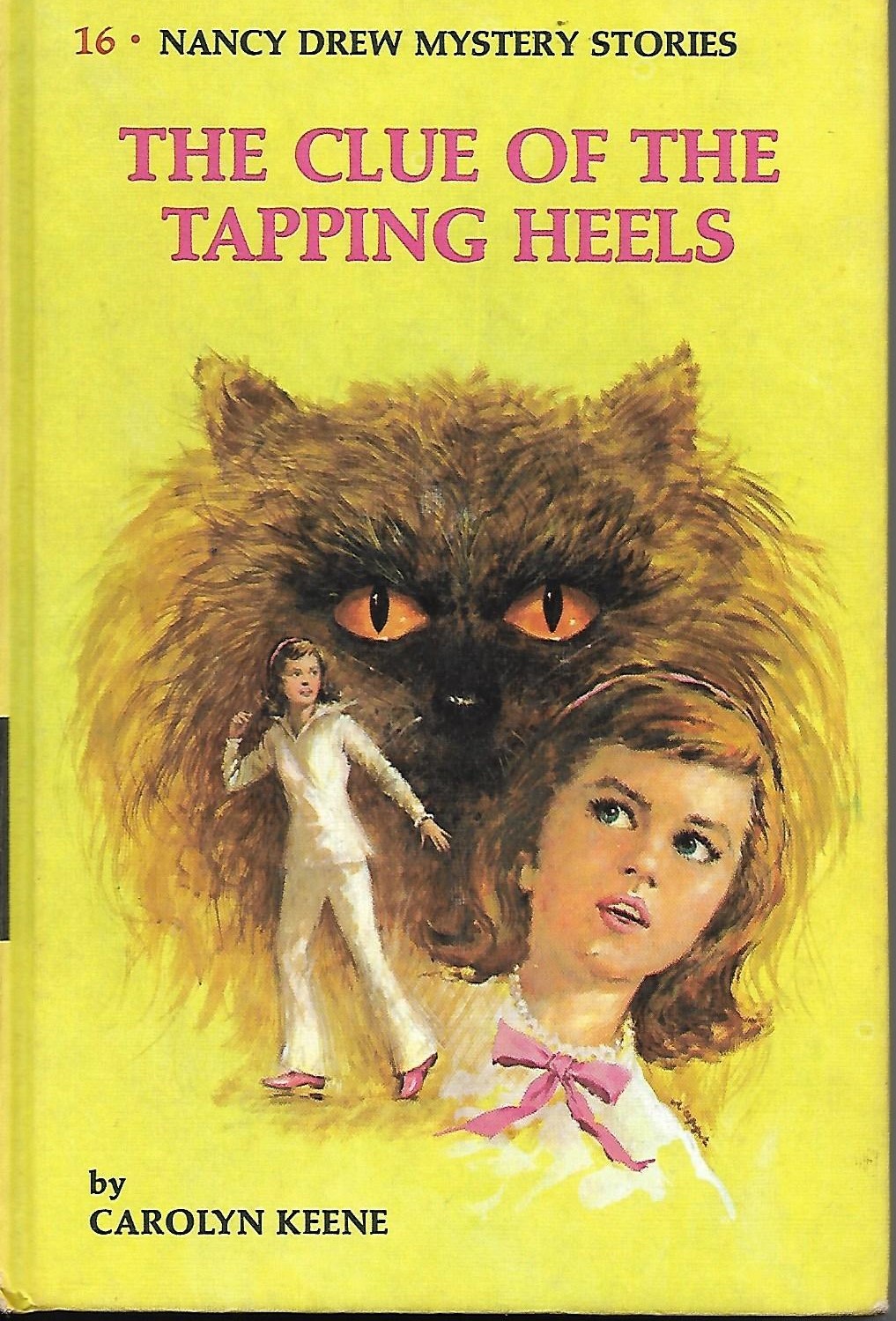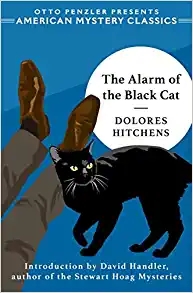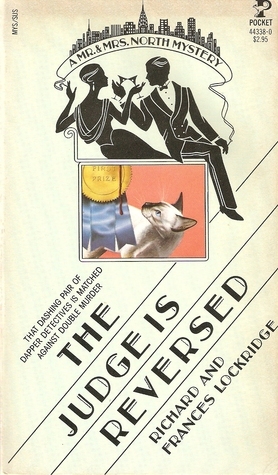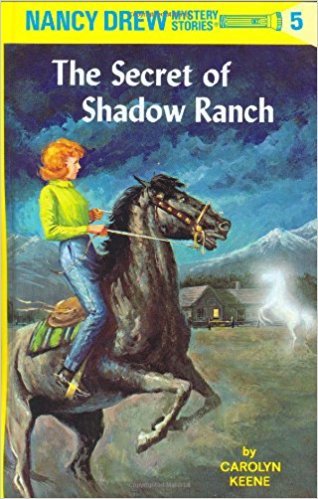Hello Readers! Today is the last day of #ReadingtheMeow2024, and I had so much fun posting cat-themed Golden Age mysteries this week. We’re ending this event with the sixteenth Nancy Drew adventure: The Clue of the Tapping Heels. Nancy and her pals, Bess and George, are helping solve the mystery of the strange tapping in the house of a retired actress turned Persian cat breeder and seller.

Plot Summary: 1939 version
“Meet Nancy Drew, a young and adventurous detective,” Nancy introduced herself, along with her loyal friends, Bess Marvin and George Fayne.” Bess chimed in, “We’re always up for a good mystery!” Their latest adventure begins when they encounter a wandering Persian cat on the road. “What’s this little fella doing out here all alone?” George wondered. Little do they know, this feline encounter will lead them to their next intriguing mystery.
Fred Bunce, one of the neighbors, had taken care of a boy named Gus Woonton, who was reportedly mentally and physically challenged. Miss Carter had grown fond of Gus while he was under the care of Fred Bunce and his wife, and she paid for him to live at the Riverside Institution, a sprawling Victorian building nestled in the heart of the countryside, in hopes of him receiving proper care for his ailments. Miss Carter receives a telegram informing her that Gus has died, and Fred Bunce’s eagerness to cover the funeral expenses raises Nancy’s suspicions.
After the neighbors leave, Nancy encounters a man outside Miss Carter’s home asking for Lady Violette. Nancy informs him that no such person lives there, only to learn that Miss Carter, a former actress, had played a character named Lady Violette in a past play. Nancy quickly tracks down the man, Horace St. Will, and he and Miss Carter are happily reunited. Mr. St. Will reveals that he knew Ralph Woonton, Gus’s father. He provides Nancy and her father, a wise and supportive figure in her life, with old letters from Ralph Woonton, indicating that Ralph and his wife never had a son. Nancy deduces that Gus Woonton had an inheritance in trust from his parents, which Fred Bunce might have stolen. Her suspicions intensify when she follows Bunce to a stock market firm, where she discovers he has lost considerable money in faulty stocks. Soon after, the Bunces mysteriously vacate their apartment. Nancy, Bess, and George investigate the empty apartment and find two of Miss Carter’s Persian kittens, which they return to her.
Miss Carter has very little money, as she regularly sends checks to a young actress named Beverly Barrett in New York City. Miss Carter injured her leg when she first met Nancy, so Nancy arranges for Mrs. Bealing, a cousin of Hannah Gruen’s, to take care of her and her cats. The investigation takes Nancy to New York and then onto a cruise ship, where she faces further dangers while attempting to recover Gus’s inheritance and help restore Miss Carter’s financial position. In the climax, Nancy is kidnapped and left bound and gagged inside a locked cabin on the ship. Her tapping becomes how she is rescued, ultimately leading to the recovery of the missing funds.

Plot Summary: 1969 version
Nancy Drew’s housekeeper, Hannah Gruen, asks Nancy to investigate strange tapping noises coming from the house. Her friend, Mrs. Bealing, is hired to help while the owner, Miss Carter, recovers from a broken leg. Nancy agrees to investigate the mystery and enlists the help of her best friends, Bess Marvin and George Fayne, to help her because she will be busy most evenings with a variety show where she’s performing three different tap dance numbers. Her friends agree to help, and the three of them head over to Miss Carter’s.
Retired dancer Miss Carter welcomes the three ladies and regales them with tales of her time onstage. Now retired, she has very little money and breeds Persian cats after several were gifted to her. That night, Nancy hears the mysterious tapping and sends a message to the person in Morse Code, which garners no response. She searches the house for clues but finds nothing. That night, someone breaks into the garage where the cats are housed and steals five Persians.
Miss Carter is distraught and wonders if the cat burglar and the mysterious tapper are identical. However, Nancy is still determining. Nancy, Bess, and George sleuth around a house and find a secret, hidden bedroom in the basement that someone has been using recently. Along with the bedroom and full bathroom, there’s a bookcase full of books, including a diary.
Nancy reads the diary, and it belongs to a lonely, troubled young man named Gus Woonton, whose boyhood is spent committing petty crimes and dealing with untreated mental illness. In the diary, Gus Woonton details some pretty dark child abuse and his many attempts to escape his virtual imprisonment in the small hidden bedroom that he stays in while his parents are gallivanting around on a four-month vacation and he is left in the care of some guardians. Eventually, Woonton is sent to a mental hospital when his parents return.
Nancy believes Gus Woonton is the man using the secret bedroom and tapping into the house for some unknown reason. Nancy and her father attempt to track down Woonton, and they find that he escaped from his mental institution a few weeks before. Carson Drew, Nancy’s father, investigates further, hoping to locate Gus Woonton’s parents. However, they recently died in Chicago, and the executor of the Woonton Estate is a man named Fred Bunce.
Fred Bunce, a shifty lawyer, is also Miss Carter’s next-door neighbor. He hates the cattery and wants to shut it down, and he has been having lots of disagreements with Miss Carter. The suspicion that he is the cat burglar heightens after he is found in Miss Carter’s driveway after some of the cats are stolen. However, people need help to figure out why he would steal the cats.
Nancy and her friends take some of the remaining cats to the cat show; one of the cats wins first prize, and the notice another booth is also selling Persians, and upon closer inspection, they realize the booth is stocked with Miss Carter’s missing cats. They call the police, and when the police arrive, the bogus cat seller has closed up shop. However, the man selling the cats doesn’t match Fred Bunce’s description or Gus Woonton’s description. They attempt to sell the last cat, but she escapes into the rafter, which leads to a heroic rescue by Nancy.
Nancy now believes she has two cases on her hands and must trap the mysterious tapper, who she considers to be Gus Woonton, and unravel who the cat burglar is. Nancy, her boyfriend Ned, and the rest of her pals set a trap for Woonton and catch him breaking into the house. He confesses to being the tapper- he is looking for a bunch of objects he hid around the house that were his grandmother’s, but after four years in a mental institution, he forgot where he hid everything.
Woonton is turned over to the police, but when questioned about the cat thefts, he is flabbergasted and vows he has nothing to do with those crimes. Nancy and her father also tell Woonton that his parents are dead and that a man named Fred Bunce is the executor of the estate. They have found that Bunce has disappeared and embezzled quite a bit of the estate.
Nancy returns to Miss Carter’s house, and they celebrate solving the mysterious tapper case. She remembers in the middle of the night to seal off the way Woonton has been sneaking around the house when she is taken from behind and gagged. She then uses her Morse code tapping skills to signal for help when Bess and George look for her. After untieing Nancy, they catch Fred Bunce and his partner-in-crime stealing the cats on the side for an extra fence.
With both crimes solved, Nancy performs her dance numbers at the school variety show and adds a Morse code message asking for someone to contact her if they have a case they want to be investigated. A young soldier stands up and meets her after the performance to tell her about a new mysterious case.
The Review: 1939 version
The 1939 version of The Clue of the Tapping Heels is a window into the sentiments of the time and judged against modern standards; it’s a challenging read.
The titular Miss Carter is a cat hoarder, and due to her negligence, a kitten escapes and gets a broken leg before being rescued by Nancy and her friends. Instead of taking the injured cat to a vet, Nancy decides that she has the knowledge to heal the cat and sets its leg. This premise is not only ridiculous; it’s dangerous telling the readers that they too could help an injured cat- and yes, this could happen because I loved this book as a young kid and was on the prowl to help any wayward injured kitten. However, I did like the cat burglar plot and found Miss Violette a caring, if not competent, cat owner.
The Tapping of the Heels is also the book that made me fall out of love with reading Nancy Drew as a child once I could grasp the more unsavory elements. Firstly, there’s a lot of casual racism in the story, spouted by Nancy, and in the general characterization of a man in the book. It’s gross and sad to read, but it is typical of Wirt’s general attitude.
However, the aspect of the book that dates The Tapping of the Heels is its portrayal of Gus Woonton, a physically and mentally challenged young child who is left in the care of horrible people, reported as dead, and in the end, sent to an institution where thy cure his disabilities.
I read this book as a young child and remember asking my mom if she could send me to a place where they could cure my cerebral palsy, like the kid in the story, and she was horrified. Let’s just say The Clue of the Tapping Heels was removed from my reading rotation. The Clue of the Tapping Heels is filled with dangerous ideas and isn’t suitable for children to read today.
However, the story hangs together well, the cat plot will appeal to young girls, there’s lots of action, and Nancy uses Morse Code to escape from her kidnappers. One good thing that came out of reading this book is that I became intensely curious about learning Morse Code, which my grandfather taught me, and we used to tap out messages to each other for fun. Does any of that make up for the dumpster fire that is the 1939 version of The Clue of The Tapping Heels? No.
The Review: 1969 version
The 1969 version of The Clue of the Tapping Heels makes substantial changes to the original story, beginning with legitimizing Miss Carter having 25 cats by saying she is a Persian cat breeder- although if this story was re-written in 2024, I’m sure her new profession would be owner of a cat rescue since cat breeding is a divisive topic.
A little Persian kitten escapes and crosses paths with Nancy and her friends, but this cat has been drugged and dropped by the cat-napper. A veterinarian sees the kitten and makes a quick recovery. There’s a real emphasis on the catnapper breaking into the garage and stealing the cats, a showdown at the cat show with the kidnapper, and, of course, the daring rescue of the prize-winning Persian from Nancy.
It’s a cute, lighthearted mystery with an anticlimactic ending and would have been more impactful if the money-hungry Fred Bunce was selling the cats to make a buck and his hatred of the cattery was a ruse. It would have tied the two mysteries together well.
The mysterious tapper- Gus Woonton, undergoes significant changes: he’s a young man who has escaped from a mental hospital. While the update removed any troubling biases against the disabled, this version has no issues linking mental illness with criminal behavior and disregard for human life. It’s one step forward, two steps back. I think just making him a man who was hunting around the house for jewels- ala The Bat or The Circular Staircase by Mary Roberts Rinehart -which had the same premise of a young man hunting around a home and making mysterious noises- would have sidestepped any messiness.
Hindsight is 2020, and while just making Gus Woonton a burglar would have simplified the story, it also would have made his actions make more sense. As I was reading through the book, I couldn’t help but think: Everything this guy is doing is so weird. It feels like something a kid would do, and this is probably a carryover from the fact that he was originally a child.
The Clue of the Tapping Heels also tries to modernize Nancy’s new hobby of tapping. She’s learning tap for a variety show, which is so 1969 that it hurts, and the sort of feeble tag on the Morse Code element, which probably felt dated even then but is the titular element that gets Nancy out of her jam.
Their double use of tapping is silly to me because not only is Nancy Drew an amateur detective and a skin diver (previous book), but she’s also a competent tap dancer and has recently learned Morse Code. That’s a lot for one girl, but okay. Morse Code is used in subsequent books, so they could only eschew that element partially, but I got the sense that if they could have, they would.
What’s interesting about the updates is that while they eradicate the problematic ideas and language of the 1930s, they place it so firmly in the late 1960s that it still feels dated and strange to modern readers. Of course, the removal of the racist characters and all the other unsavory depictions made the book more palatable, but somehow, the flow of the story is choppy, and the dialogue is more stilted especially in the beginning.
The Clue of the Tapping Heels in the 1969 version has a better developed love story between Miss Carter and her long-lost love, her former dancing partner, who she gets reunited with. There are many cat antics and a strong cat burglary story, which I wish I didn’t have to share the stage with the weird tapping story which it didn’t dovetail with strongly. I enjoyed re-reading both versions for #ReadingtheMeow2024, but the improved 1969 version is still an uneven book.
Nancy Drew Reviews

Mildred A. Wirt Biography
Mildred A. Wirt Benson (1905-2002) was an American journalist and prolific author, best known for her significant contribution to the Nancy Drew mystery series under the pseudonym Carolyn Keene. Born in Ladora, Iowa, she developed an early passion for writing, which led her to earn a Bachelor’s degree in English and the first Master’s degree in journalism from the University of Iowa. Benson authored 23 of the first 30 Nancy Drew books, portraying the titular character as a confident and resourceful young woman, which had a lasting impact on children’s literature. Besides her work on Nancy Drew, she wrote over 130 books, including the Penny Parker mystery series. Throughout her life, Benson also worked as a journalist for the Toledo Times and the Toledo Blade in Ohio, continuing her journalistic endeavors until shortly before her death. Her role in shaping Nancy Drew was publicly acknowledged in a 1980 court case, and she has since been celebrated for her pioneering achievements in literature and journalism. Mildred Wirt Benson’s legacy endures through the enduring popularity of Nancy Drew and her inspiration to generations of young readers.















Leave a comment